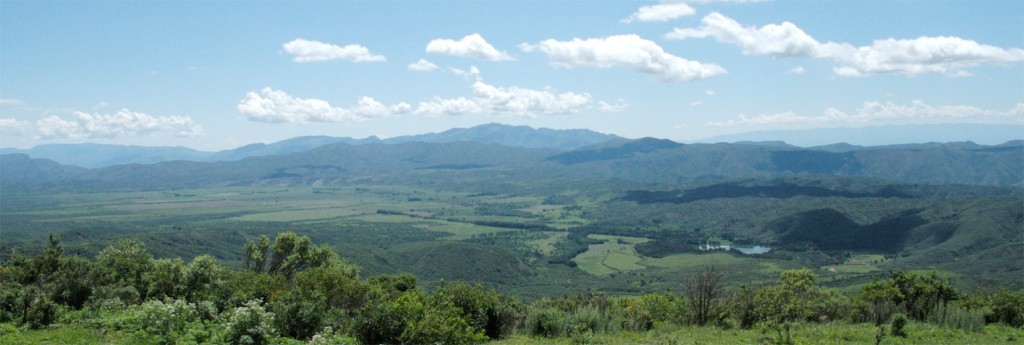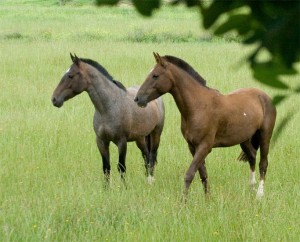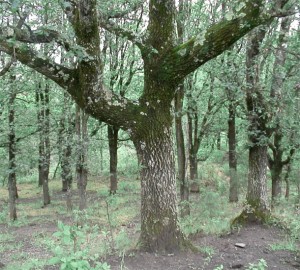Argentina 8 : to plant trees is fine, but to use them to guaranty food security is better
July 7th, 2009How to plant trees for food security ?
In order to diversify the revenus of the estancia, the agronome engineers came with the great idea of planting wallnut trees.

Wallnuts are sold a good price and have a fair market in Argentina. Then, in 20 years, you ill be able to sell your wood if you choose so. So why not participate in the general fight against global warming by planting trees.
But to plant 8500 wallnut in a go, in the short term, it will become forest which will take 60ha of pasture from the cattle. The dense foilage and the low architecture of the wallnut empeaches any kind of plant to grow under it.
Without speaking about the proliferation of uncontrolable foreign plants it can cast, ready to put an end to the original balance of the ecosystem, with high levels of cyanidrides and all the dejections of the wallnut cork which will act as herbicides.
To palnt trees can be much more profitable, and here we come :
You must make the tree an ally of your plans and use it to reenforce your strategy of sustainability.
Waht brings the wallnut tree ?
- It can fix up to 200kg azote/year from the air to the soil.
- it keeps up a mycelial network, which distributes directly to the roots all the water, the minerals and nutrients a tree needs.
- It takes care of the life of the soil by maintaining the good bacterias which the plant needs to grow.
- It fixes and retain the soil from erosion, stop the progression of canyons, the main menace of the domain.
- It can be a true climatic shock absorber against the current climate change, protecting from the wind, frost, and attracting rain by the mollecules they cast in the air.
- Trees are vital to horse alimentation
 ; dont forget that the primary biotope of horses is wood.
; dont forget that the primary biotope of horses is wood.
What are the priorities of the domain?
We need azote to make nitrates to accelerate the growth fo the pastures.
We desperatly need to reenforce the vegetal web and the deep and surface root web to stop erosion and the progress of the canyons.
We need to settle Sylvo-agriculture :
Experience has shown us that the ideal density of trees for this is 50 trees by hectare. This number allows the passage of the machinery while letting sufficient light for the crops.
8500 trees will cover 170 ha.
How to plant these trees ?
The distance between trees :
To know the distance between each tree you should calculate :
d = √A/n
d, for distance, A for the area, n the number of trees. This is how used to do Braun-Blanquet, the inventor of phytosociology.
So for our 50 trees hectarewe need to 1 a plant 1 tree every 14m.
The type of soil :
The wallnut tree does not like water in excess. It must be well drained, with little clay as possible. If you do not pay attentionto this it will catch deseases and parasites. In Argentina the most commun parasite is the mushroom Phytophtora. It takes up the base of the tree and the roots. The only remedy known here is amputation, which does not help to the growth of the tree. So better avoid any kind of drop to dop irrigation, etc.
Dont work on the soil before planting. If you tile you will create a tilage sole, by destructuring the soil which will create blocks of clay, hindering the water absorbtion. Tilage is the best way to put your trees vulnarable to parasite mushrooms or insects.
To plant them you only have to dig a hole the size of the clod of your tree you need to plant. Punto y basta.
To make shure our tree will get a quick and steady growth we go for mycoforestation
Two techniques according to the site :
 If you have an old forest close by, you will link it with your young trees by a path of wood chips which will make a web between all the trees, which will make the mycelium run.
If you have an old forest close by, you will link it with your young trees by a path of wood chips which will make a web between all the trees, which will make the mycelium run.
Or you proceed directly to the inoculation with mycelium raised in a lab, which as soon as it runs will provide directly to the trees all the nutrient they need. One must always use the help of nature in agriculture, it is the most efficient way.
This is another reason to avoid tilage around trees, it is the best way to break all mycelial and mycorhizal relationships, the symbiosis trees and mushroom have creates for their mutual health and benefit. A work the man is ready to distroy for the false purpose of letting the soil breathe, while he is destructuring its profound nature, and distroying the dynamic of the beings which maintain its’ balance. Nobody has had the idea of tiling a forest to make it grow yet…
Trees for agriculture.
With a density of 50 trees hectare, one tree every 14m, food plantations as well as pastures can prosper… and above all each year you have your crop of wallnuts and in 20 years you get your share of wood if you want to timber.
Organise the biodiversity
dont plant only wallnut trees … when you want to succeed with you graminees crop, rice, wheat, or pasture you need leguminous trees: acacias mimosaceas, here we have the fabulous pink lapacho a great medicinal tree to cure cancer; another leguminous like the caroub tree, which will provide fourage with its leaves (attentionwith the excess of azote) and nutritional complement by its beans.
control pollution.
8500 wallnut trees produce wallnut… at least 12 000 tons/year. Among these 12000 tons, 7000 tons rubish filled with black cyanidrides and carbon. Pollution ? Not really, it can be the ideal raw material to produce biodiesel thanks to micro algaes…
